
Hernán Cortés de Monroy y Pizarro Altamirano, 1st Marquess of the Valley of Oaxaca was a Spanish conquistador who led an expedition that caused the fall of the Aztec Empire and brought large portions of what is now mainland Mexico under the rule of the king of Castile in the early 16th century. Cortés was part of the generation of Spanish explorers and conquistadors who began the first phase of the Spanish colonization of the Americas.
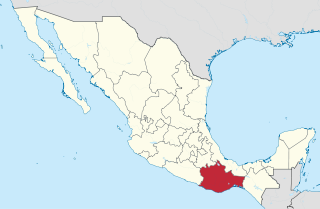
Oaxaca, officially the Free and Sovereign State of Oaxaca, is one of the 32 states that compose the Federative Entities of the United Mexican States. It is divided into 570 municipalities, of which 418 are governed by the system of usos y costumbres with recognized local forms of self-governance. Its capital city is Oaxaca de Juárez.
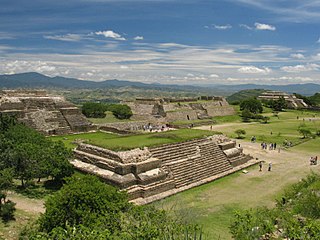
Oaxaca de Juárez, or simply Oaxaca, is the capital and largest city of the eponymous Mexican state of Oaxaca. It is the municipal seat for the surrounding municipality of Oaxaca. It is in the Centro District in the Central Valleys region of the state, in the foothills of the Sierra Madre at the base of the Cerro del Fortín, extending to the banks of the Atoyac River.
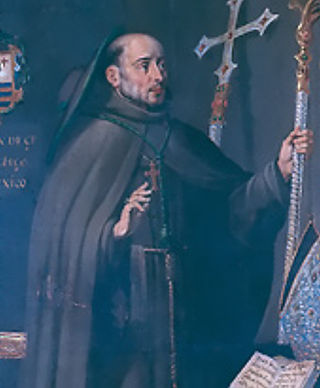
Juan de Zumárraga, OFM was a Spanish Basque Franciscan prelate and the first Bishop of Mexico. He was also the region's first inquisitor. He wrote Doctrina breve, the first book published in the Western Hemisphere by a European, printed in Mexico City in 1539.
Diego Durán was a Dominican friar best known for his authorship of one of the earliest Western books on the history and culture of the Aztecs, The History of the Indies of New Spain, a book that was much criticised in his lifetime for helping the "heathen" maintain their culture.
Sebastián Ramírez de Fuenleal was bishop of Santo Domingo and president of the Real Audiencia of Santo Domingo from 1528 to 1531. He was also president of the second Real Audiencia of Mexico from January 10, 1531, to April 16, 1535. Later he was a member of the Council of the Indies.
Alonso de Maldonado Diez de Ledesma, was a Spanish lawyer and a member of the second Real Audiencia of Mexico, which governed New Spain from January 10, 1531 to April 16, 1535. He was also president of the first Real Audiencia of Guatemala, and in that capacity interim governor of Guatemala from 1536 to September 15, 1539. He was governor of Guatemala a second time, from 1542 to 1548.
Huave is a language isolate spoken by the indigenous Huave people on the Pacific coast of the Mexican state of Oaxaca. The language is spoken in four villages on the Isthmus of Tehuantepec, in the southeast of the state, by around 20,000 people.
Francisco Burgoa was a historian of the Dominican Order in Mexico. He entered the Dominican Order on 2 August 1629, and soon became a master in theology. The voluminous books written by him on the past of his native Mexican province of Antequera,, are very rare and valuable, though not absolutely reliable on several topics. Burgoa utilizes material on particular Dominicans from Agustín Dávila Padilla, but emphasizes their work in Oaxaca. Burgoa was curate of several Indian parishes and his knowledge of the native languages, the Zapotec and Mixtec, is stated to have been very thorough. In 1649 he became Provincial of the Province of San Hipólito and took part in the chapter general of his order in Rome in 1656. Returning to Mexico with the title of vicar-general, a member of the Spanish Inquisition, and Commissary and Inspector of Libraries of New Spain (Mexico), he again became Provincial of Oaxaca in 1662. He was interested in several ecclesiastical foundations and improvements, and was highly respected at the time of his death. The two historical and geographical works through which he is best known are the Palestra histórica, ó Historia de la Provincia de San Hipólito de Oaxaca, de la Orden de Predicadores, and the Descripción geográfica de la América setentrional etc.. He published a number of sermons and also wrote Itinerario de Oaxaca á Roma y de Roma a Oaxaca.
Francisco Cepeda was a Spanish Dominican missionary.
Pedro de Betanzos was a Spanish Franciscan missionary and linguist.

The Benito Juárez Autonomous University of Oaxaca is a public university located in the city of Oaxaca de Juárez in state of Oaxaca, Mexico.

Francisco Marroquín was the first bishop of Guatemala, translator of Central American languages and provisional Governor of Guatemala.
San Juan Achiutla is a town and municipality in Oaxaca in south-western Mexico. The municipality covers an area of 49.76 km2. It is located in a mountain range, between the hills Negro to the East, Yucuquise to the Northwest, Cuate to the North and Totolote to the South. It is crossed by the river Los Sabinos and has a dam called Cahuayande. Its weather is temperate. It is in the Mixteca Alta, one of the three parties that make up the Mixteca region and in the Mixteca Alta is part of what was Achiutla, the significant Prehispanic place.
Francisco de Aguilar, born Alonso de Aguilar, was a Spanish conquistador who took part in the expedition led by Hernán Cortés that resulted in the conquest of the Aztec Empire and the fall of Tenochtitlan, the capital of the Aztec state in the central Mexican plateau.
Tomás Pinpin was a printer, writer and publisher from Abucay, a municipality in the province of Bataan, Philippines, who was the first Philippine printer and is sometimes referred as the "Prince of the Filipino Printers."
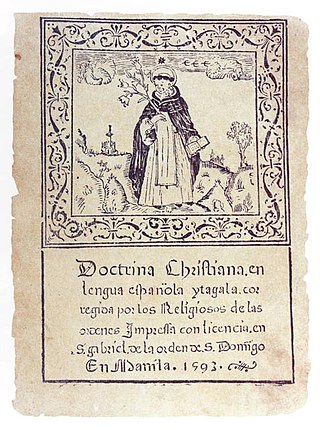
The Doctrina Christiana were two early books on the catechism of the Catholic Church, both published 1593 in Manila, Philippines. These are two of the earliest printed books in the Philippines.
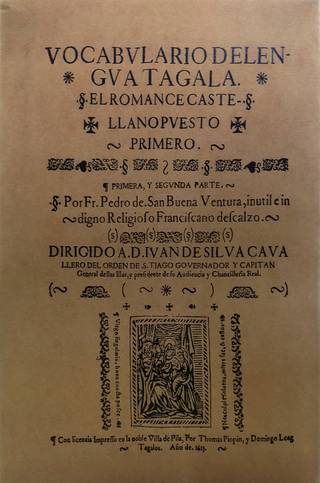
Vocabulario de la lengua tagala was the first dictionary of the Tagalog language in the Philippines, It was written by the Franciscan friar Pedro de San Buena Ventura and published in Pila, Laguna, in 1613. Juan de Plasencia had written a vocabulario earlier but it was not printed. More than a century later, a dictionary of the same name was prepared by Jesuit priests Juan de Noceda and Pedro de Sanlucar; their first edition was published in Manila in 1754 and then the second in 1860, which was reissued by the Komisyon sa Wikang Filipino in 2013.
Fray Nicolás of Jesús María was a religious carmelita born in Seville, Spain, during the last years of the reign of Carlos II (1734-1759). His parents were Francisco Sánchez Risco and María de Merino, whom called him Nicolás Sánchez Risco y Merino.
Francisco Blancas de San José played a prominent role in the history of printing and publishing in the Philippines during the late 18th century, contributing to the development of these practices in the region.







